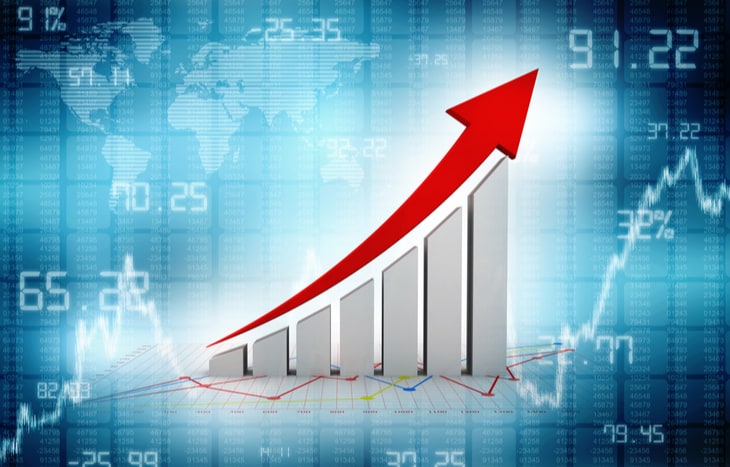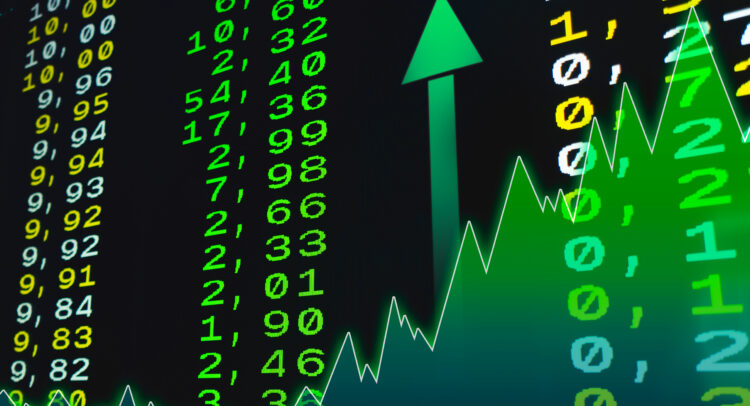Growth Stocks Dilemma: Are the High Rewards Worth the Risk?
Let’s cut to the chase: what are the risks of investing in growth stocks? You might be eyeing those shiny high-growth shares, lured by the promise of sweet returns. But hold up—there’s a flip side to that shining coin. I’m here to guide you through the rough patches on the road to growth stock glory. From the wild ride of market swings to the real perils that lurk behind those dazzling profit forecasts, let’s dive in and see if the reward is worth the risk you’re taking on. Grab your helmet; we’re about to navigate the high-stakes world of growth investing.
Understanding Growth Stock Volatility & Risks
The Highs and Lows of Market Volatility
Growth stocks can act like a roller coaster. They swing up and down! These swings mean volatility. When a stock goes up a lot, it’s thrilling, like the top of a roller coaster. But it can drop fast too. This scares many people. Big, fast moves in price come with growth stocks. And you must deal with this.
Why do growth stocks jump around so much? People get excited about new things the company might do. This pumps up the price. Sometimes, too much. When folks think the fun ride will end, they may sell. The price can fall quick. Volatility needs tough nerves!
Identifying Key Risks of High-Growth Shares
Now, let’s dig into high-growth shares’ risks. First, they can be overvalued. That means the price is more than the company is worth. Think of paying $10 for a $5 bill. It doesn’t make sense, right? But how do you know if it’s overvalued? You look at earnings, sales, and more. If the numbers don’t add up, caution!
Stock market bubbles can form around these stocks. When everyone wants the same stocks, their prices fly too high. Like blowing up a balloon too much, it can pop. If you’re in when that happens, you could lose money.
Another thing to watch is the company’s earnings growth. We all want it to keep going up. But can they keep it up? That’s the risk!
Interest rates matter too. They can change how much a growth stock is worth. If rates go up, growth stocks often drop. It’s because borrowing money gets pricier. That can slow down earnings growth.
Tech stocks face extra danger. They’re often growth stocks. They change fast and face stiff competition. They can fall behind and see their stock drop.
Economic downturns hit growth stocks hard. When money is tight, new, shiny stocks aren’t as hot. People look for safer places to keep their money.
Growth stocks often don’t pay dividends. That means you don’t get a little bit back regularly. You just hope the stock price goes up.
It takes guts to play in the growth stock game. You may pick a winner, or it might trip up. The bets are on future performance, but no one knows the future for sure. So, it’s a bit like a guess.
You rely a lot on what others feel about the stock — that’s market sentiment. If it shifts the wrong way, your stock might deflate.
Investing long-term in growth stocks comes with risks. The future is never set in stone. Markets can sell off fast. If you need to sell during a drop, it might hurt. That’s liquidity risk.
Think of it like going to a new ice cream shop. Will it still be cool in ten years? It’s hard to tell.
So, growth stocks are not for the faint of heart. They can soar and give big wins. But just as fast, they might dive. It’s important to know this. That way, you’re ready for the ride, come highs or lows.
Evaluating Overvaluation and Its Consequences
Navigating Market Bubbles and Their Aftermath
Ever seen a bubble pop? It’s sudden. Same with stock market bubbles. They’re times when growth stock prices soar, far higher than a company’s true worth. These bubbles are risky. When they burst, stock prices fall hard and fast. Think of it like musical chairs. No one wants to be the last one standing, without a chair, when the music stops.
But why do bubbles happen? Often, it’s because everyone gets too excited about certain stocks or sectors. Think tech in the 90s or housing in the 2000s. Prices climb as people rush in, thinking they’ll only go higher. Then reality hits. Maybe a bad earnings report, or a change in the economy. Suddenly, growth stocks drop. If you bought high, thinking quick profits, you could lose a lot.
Now, some folks might say, grab these stocks while they’re low. But be careful. After a bubble bursts, it can take years for a stock to recover, if it ever does. And that money you invested? It’s tied up, not helping you grow anywhere else.
The Effects of Interest Rates on High P/E Stocks
Let’s talk about interest rates. They matter, a lot, to high P/E (price-to-earnings) stocks. High P/E means folks are paying a lot for a stock compared to its earnings. They’re betting on big future growth. When interest rates rise, it’s like adding weight to a sprinter. Everything gets harder. Borrowing money costs more for companies, squeezing what they earn. It also makes safer bets—like bonds—appealing, as they pay better interest.
Here’s the simple take: higher rates can mean trouble for growth stocks. They often have high P/E ratios, banking on big future earnings to justify their price. But when rates go up, their future earnings look less shiny compared to safer returns elsewhere. So, their stock prices might fall. And if you own these stocks, you feel that pinch directly in your portfolio.
Remember, high interest rates don’t always mean you should flee high P/E stocks. Instead, think of your long game. Can the company grow into its high P/E ratio? Do you believe in its future? No one can see tomorrow’s news, but you’ve got to gauge if that growth stock can outrun rising rates.
So, evaluating stock prices versus their earning power—and considering how interest rates might stir the pot—is key. These factors help you avoid overvalued stocks that can leave your wallet feeling light when markets correct. They can also guide you toward smarter picks for your hard-earned money. Not just chasing wins, but investing with foresight.
The Long-Term Implications of Growth Investing
Challenges of Earnings Growth and Profit Sustainability
Let’s talk shop about growth stocks. They’re like hot rods. Fast, exciting, but not without risk. Imagine vrooming down the financial fast lane. Your money’s on a growth stock, one that’s eyes are set on the future, not so much today’s profit. But here’s the hitch. All eyes are on that word: growth. What happens if that growth slows down? You guessed it; the stock might take a dive.
So, what’s the deal with earnings growth and profit? Think of it like this: you’ve got this cool lemonade stand (that’s your growth stock), and man, everyone’s talking about how great it will be when it turns into a chain. But right now? It’s just one stand. And it needs to prove it can earn more and more money over time. That’s challenging. You’ve got to spend money to grow. If our stand spends too much or doesn’t pull in the crowds? We’ve got a problem.
Let’s chat about the dangers when a hot stock cools off. Fast growth can make prices soar too high, too quick. But what if the market gets spooked or some bad news hits? Bam! Investors might bail, and prices could plummet fast. When many sell off their shares quickly, that’s a rapid market sell-off for you.
Assessing the Real Dangers of a Rapid Market Sell-Off
Imagine you’re at a concert and someone yells, “Fire!” Even if there’s no fire, everyone’s going to rush to the exits, right? That’s a bit like what happens in a market sell-off. Fear’s contagious. One person sells, and suddenly everybody’s selling their stocks. And when there’s more selling than buying, you bet stock prices drop.
Now let’s focus on that fancy term, liquidity risk. Liquidity’s like how easy you can sell your bike for cash when you need to. If nobody wants to buy, you’re stuck, and it’s the same with stocks. In a rapid sell-off, finding buyers can get tough. Growth stocks often get hit harder here since they can swing up and down quite a bit.
So, growth stocks are a bit like roller coasters. Exciting, sure. But sometimes, they drop fast, and you better buckle up. In the long haul, make sure your portfolio’s got both the sizzle of growth and the steady beat of value. That way, when the market gets wild, your money won’t ride just one wave.
Remember, growth stocks are cool if they keep growing. But if their earnings take a nosedive or everyone starts selling? Ouch, it can hurt. So, my fellow investors, let’s keep our eyes peeled and not put all our eggs in one basket. Spread ’em out and lace up for the long run. Investing’s a marathon, not a sprint. Let’s run it smart.
Strategic Considerations in Growth Stock Investment
Differentiating Between Growth and Value Stocks Risks
Let’s talk about riding the wild wave of growth stocks. Risk is the big word here, friends. Growth stocks are like sprinters, fast and full of energy. Value stocks, they’re more like marathon runners—steady and sure. Growth stocks can zoom up in value, which is great, but the flip side? They can crash hard too. And when they crash, it’s a long way down.
Now, think about high-growth shares risks. These stocks grow fast because they reinvest profits, not paying dividends. That means no extra cash for you until you sell the shares. But what if their value drops before then? No dividends and less value—that’s a double bummer.
The Influences of Regulatory and Geopolitical Shifts on Stocks
Let’s switch lanes to something trickier – the impact of big world changes on your growth stocks. Things like new laws or a shake-up between countries can mess with your investment’s worth. Imagine a new rule that makes it tougher for a tech company to sell its stuff. That’s bad news for tech stock investment dangers, right?
Or picture this: Two countries are in a spat, and it’s all over the news. The stocks get jittery, and so do investors. That’s geopolitical risks for stocks for you. These things can make your stock’s price jump around like a cat on a hot roof.
In short, growth stocks pack a punch with potential rewards. But just like a wild ride, the risks are real, and you’ve got to buckle up. Watch out for the bumps like regulatory changes or global feuds. And remember, it’s not just about the fast money. Think long term, and always be ready to dodge those risks.
In this post, we’ve explored the rollercoaster world of growth stocks. We discussed how market ups and downs affect high-growth shares and how interest rates can hit stocks hard when they’re high. Overvaluation can lead to market bubbles that eventually pop, which is rough for investors.
We also looked at the long haul of growth investing. It’s tricky to keep earnings climbing and making sure profits last. And when the market drops fast, it can be scary.
Lastly, we talked about smart moves in picking growth stocks. We need to know the difference between growth and value stocks and the big effects of laws and world events on our investments.
So, keep these thoughts in mind when you’re dealing with growth stocks. They can be risky, but with the right know-how, they can be part of a smart investment plan. Thanks for sticking with me, and here’s to making choices that help your money grow strong and steady over time!
Q&A :
What are the potential downsides of choosing growth stocks for investment?
Investing in growth stocks can offer significant returns if the companies continue their upward trajectory. However, the risks can be higher due to their often elevated valuations and volatility. Their prices are highly sensitive to changes in the market sentiment, making them prone to larger swings during market corrections or downturns. Furthermore, as these companies typically reinvest their earnings into further growth, they rarely pay dividends, which can deter income-focused investors.
Can investing in growth stocks lead to a loss of principal?
Yes, investing in growth stocks can lead to a loss of principal. These stocks are generally more volatile and can be overvalued based on future growth expectations. If a company fails to meet these expectations, its stock price can plummet. Additionally, during economic downturns or shifts in market cycles, growth stocks may suffer larger losses than their value or dividend-paying counterparts, putting the initial investment at risk.
Are growth stocks more susceptible to market corrections?
Growth stocks can indeed be more susceptible to market corrections compared to other types of stocks. Because their valuations are often predicated on optimistic future earnings and revenue growth projections, a market correction that dampens investor enthusiasm for riskier assets can result in a rapid decline in the price of growth stocks. Additionally, if interest rates rise, growth stocks, which are more sensitive to rate changes, may experience reduced demand as investors seek more yield-generating investments.
How does a rising interest rate environment affect growth stock investments?
A rising interest rate environment can negatively affect growth stock investments because it increases the cost of borrowing, potentially slowing down economic expansion and, subsequently, the growth prospects of these companies. As borrowing costs rise, investors may also begin to favor income-generating investments over growth stocks, which do not usually provide dividends. This change in investor preference can cause a decrease in demand for growth stocks and lead to lower stock prices.
Is it risky to have a portfolio heavily weighted in growth stocks?
Having a portfolio heavily weighted in growth stocks introduces a greater level of risk due to the inherent volatility of these stocks. Such a concentration means that the portfolio is less diversified and more exposed to sector-specific downturns and the risk of individual stock underperformance. A more balanced portfolio spread across various asset classes, including both growth and value stocks, can help mitigate investment risks and ensure stability during different market conditions.



